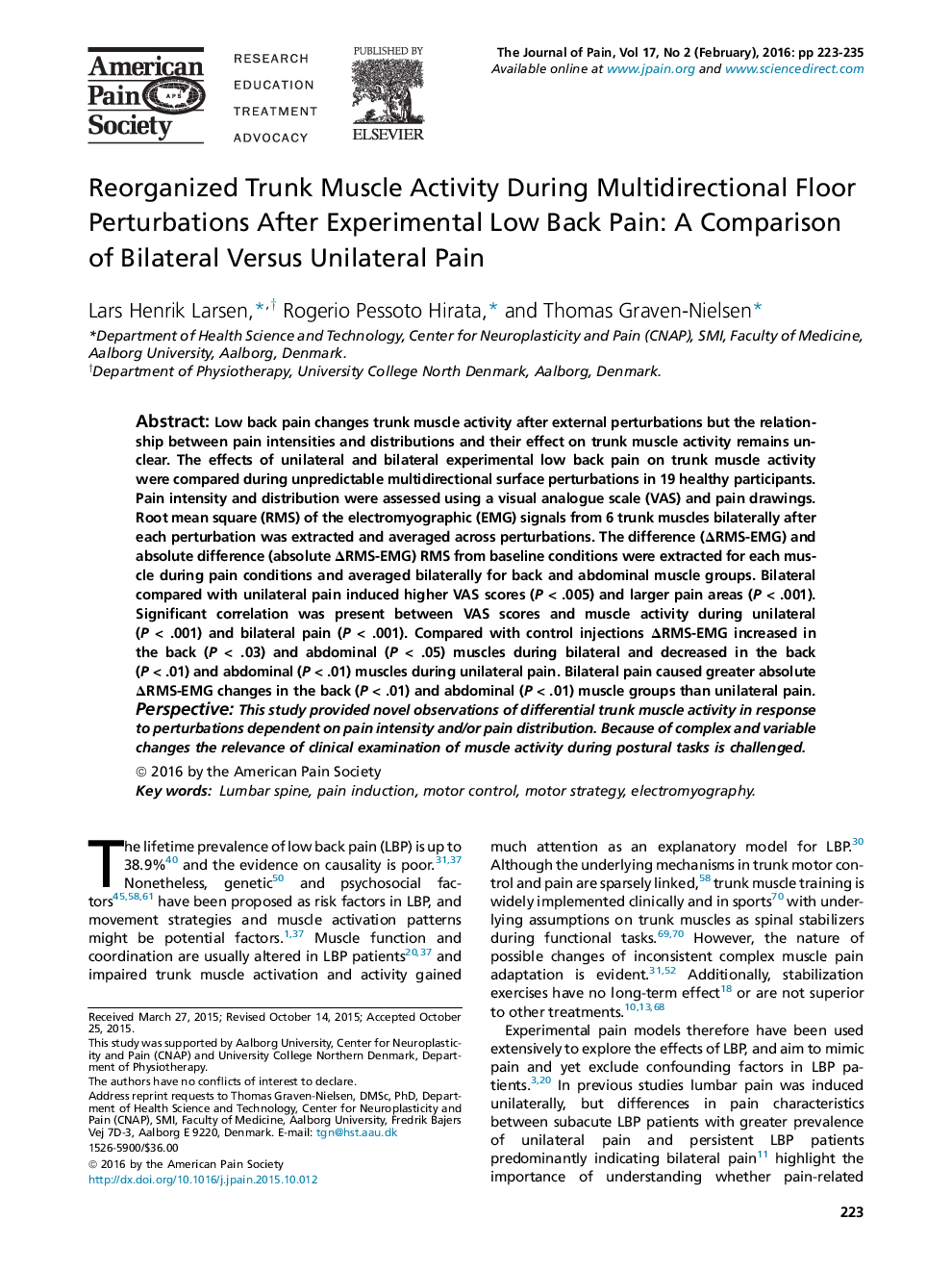| Article ID | Journal | Published Year | Pages | File Type |
|---|---|---|---|---|
| 5879252 | The Journal of Pain | 2016 | 13 Pages |
â¢We studied muscle response to surface perturbation after pain induction in healthy participants.â¢We used pain and trunk electromyographic examination during pain and control conditions.â¢There was higher and widespread bilateral pain but few related single muscle activity changes.â¢There were larger muscle activity changes in bilateral compared with unilateral pain.â¢Trunk muscle activity increased during bilateral and decreased during unilateral pain.
Low back pain changes trunk muscle activity after external perturbations but the relationship between pain intensities and distributions and their effect on trunk muscle activity remains unclear. The effects of unilateral and bilateral experimental low back pain on trunk muscle activity were compared during unpredictable multidirectional surface perturbations in 19 healthy participants. Pain intensity and distribution were assessed using a visual analogue scale (VAS) and pain drawings. Root mean square (RMS) of the electromyographic (EMG) signals from 6 trunk muscles bilaterally after each perturbation was extracted and averaged across perturbations. The difference (ÎRMS-EMG) and absolute difference (absolute ÎRMS-EMG) RMS from baseline conditions were extracted for each muscle during pain conditions and averaged bilaterally for back and abdominal muscle groups. Bilateral compared with unilateral pain induced higher VAS scores (PÂ <Â .005) and larger pain areas (PÂ <Â .001). Significant correlation was present between VAS scores and muscle activity during unilateral (PÂ <Â .001) and bilateral pain (PÂ <Â .001). Compared with control injections ÎRMS-EMG increased in the back (PÂ <Â .03) and abdominal (PÂ <Â .05) muscles during bilateral and decreased in the back (PÂ <Â .01) and abdominal (PÂ <Â .01) muscles during unilateral pain. Bilateral pain caused greater absolute ÎRMS-EMG changes in the back (PÂ <Â .01) and abdominal (PÂ <Â .01) muscle groups than unilateral pain.PerspectiveThis study provided novel observations of differential trunk muscle activity in response to perturbations dependent on pain intensity and/or pain distribution. Because of complex and variable changes the relevance of clinical examination of muscle activity during postural tasks is challenged.
